Edible tree fruits, nuts, and leaves

The following trees have edible fruits or other parts. Not all parts of edible fruits may be edible. Some people may experience idiosyncratic allergies or other bad reactions. Trees.stanford.edu recommends you do not eat any foraged plant material. Should you do so – just as in the case of fungi – be both positive of the identification of the plant and fully aware of the preparation requirements and potential dangers. Some trees mentioned in Trees.stanford.edu may no longer be found at the designated locations because they have been removed.
Araucaria family‘Every day was about survival’: Inside the graduate student affordability crisis. The Stanford Daily, 28 Feb 2019. “Students scavenge for produce from campus trees to make ends meet.”
- Bunya bunya. Araucaria bidwillii.
- European filbert, hazelnut. Corylus avellana.
- Jujube. Ziziphus jujuba.
Citrus family (Citrus Courtyard)
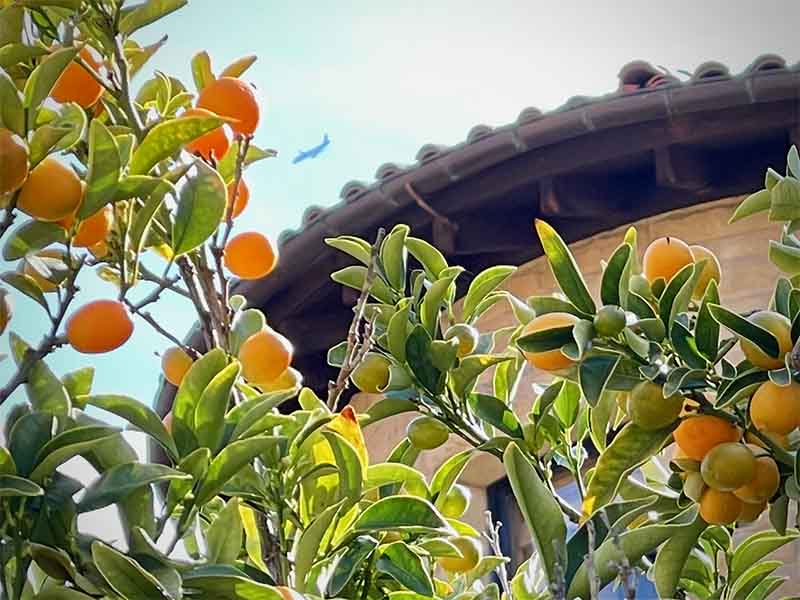
- Citron Buddha’s hand. Citrus medica var. sarcodactylus.
- Grapefruit. C. paradisi.
- Kumquat. Fortunella margarita.
- Lemon. C. limon.
- Lime. C. aurantifolia.
- Orange and blood orange. C. sinensis.
- Pomelo. C. maxima. Entry courtyard of Toyon Hall, NW corner.
- Tangerine. C. reticulata. Florence More Hall, Mayfield Ave. side. The Knoll, south side.
Ebony family
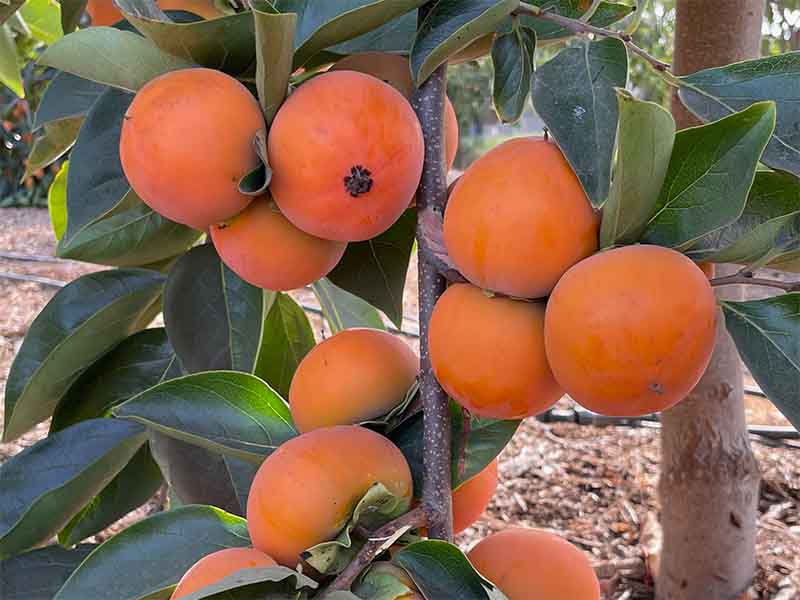
-
Japanese persimmon. Diospyros kaki. We have both the fuyu and hachiya varieties of persimmon. Fuyu is the firm fruited form eaten like an apple, growing at the Rains complex. The Hachiya type is astringent when unripe, and must be eaten when soft; it grows behind the Bookstore.
Ginkgo family
- Maidenhair tree. Ginkgo biloba.
Heath family
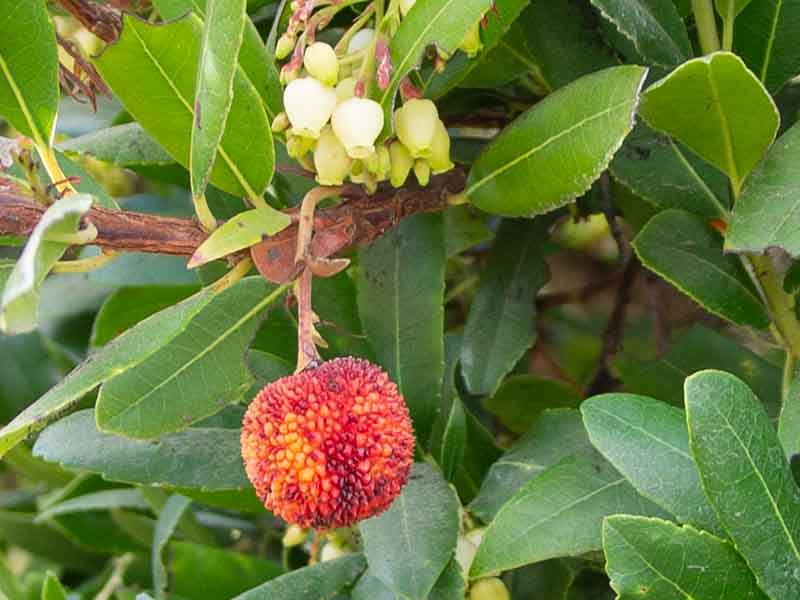
- Strawberry tree. Arbutus ‘Marina’ and Arbutus unedo.
Laurel family
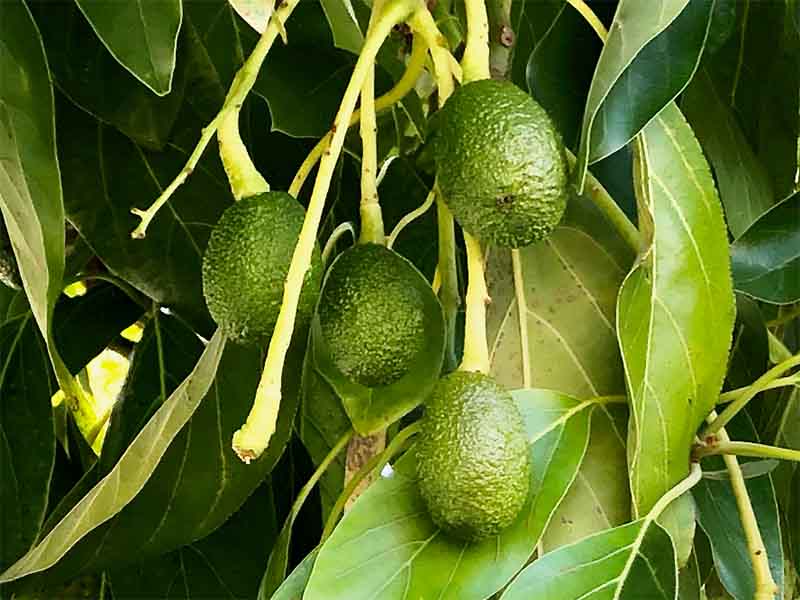
- Avocado. Persea americana.
- California bay. Umbellularia californica.
- Sweet bay. Laurus nobilis.
Loosestrife family
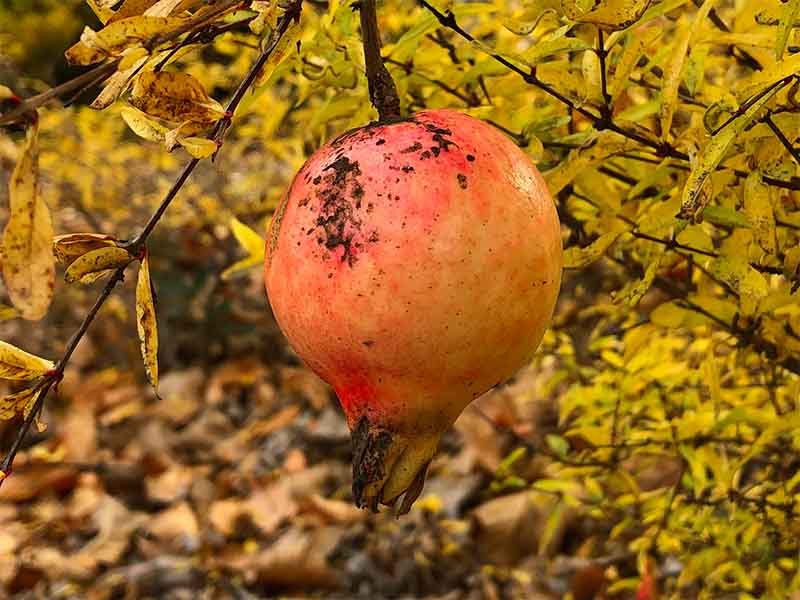
- Pomegranate. Punica granatum.
Maple family
- Sugar maple. Acer saccharum.
Mulberry family
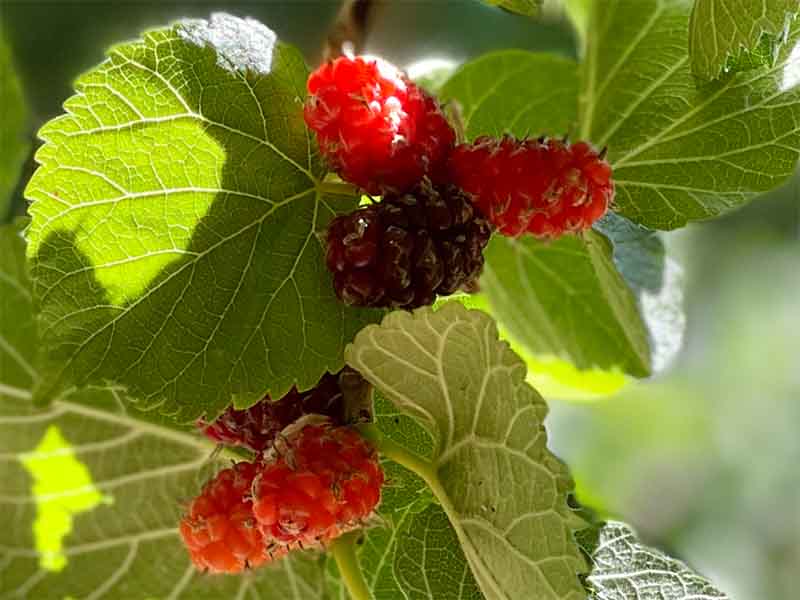
- Fig. Ficus carica.
- Mulberry. Morus nigra.
Myrtle family
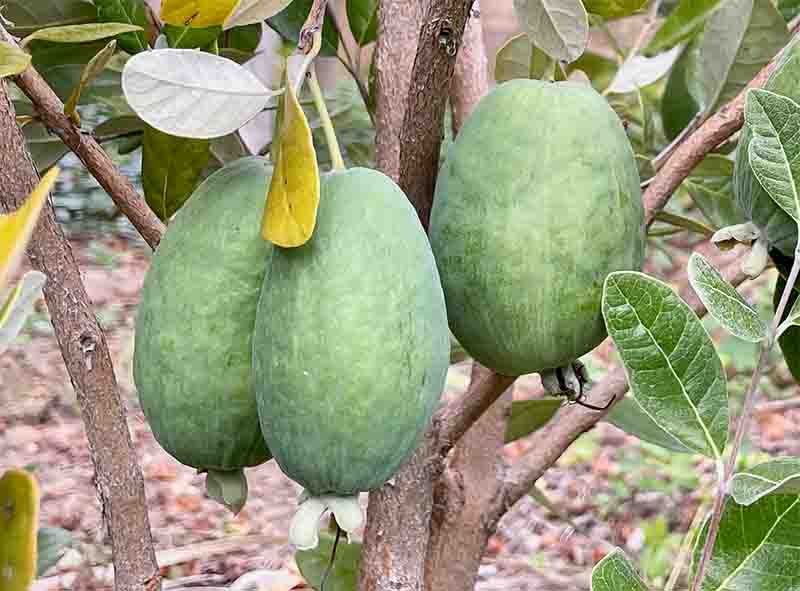
- Australian brush cherry. Syzygium paniculatum.
- Pineapple guava. Feijoa sellowiana (syn. Acca sellowiana).
- Strawberry guava. Psidium cattleianum.
Oak or Beech family
- Oaks (acorns). Quercus species.
Olive family
- Olive. Olea europaea.
Palm family
- Date palm. Phoenix species.
Pea family
- Carob. Ceratonia siliqua.
Pine family
- Pine nuts. Pinus species. Most pine have edible nuts. Italian stone pine, Pinus pinea, is a common source of pinóli or pignóli.
Rose family
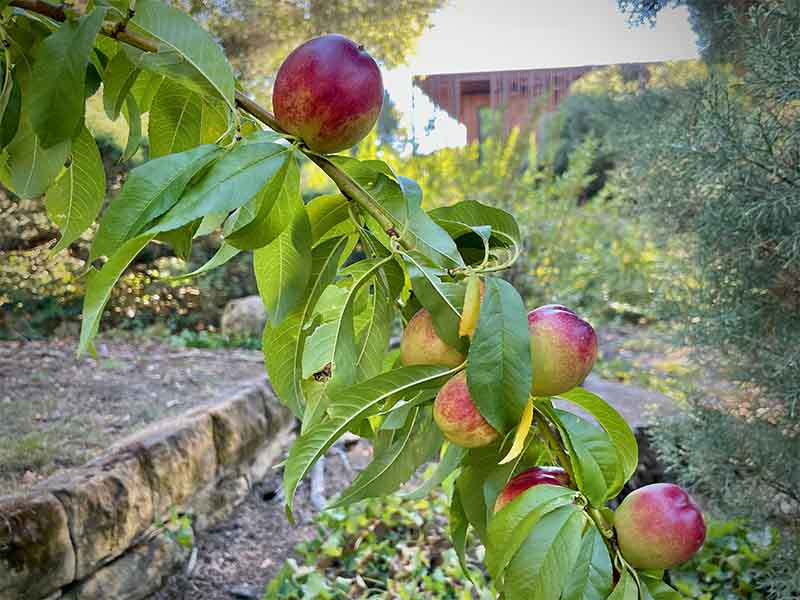
- Almond. Prunus dulcis.
- Apple. Malus species.
- Apricot. Prunus armeniaca.
- Loquat. Eriobotrya japonica.
- Peach. Prunus persica
- Plum. Prunus domestica.
- Quince. Cydonia oblonga.
Tea family
- Tea, chai. Camellia sinensis.
Viburnum family
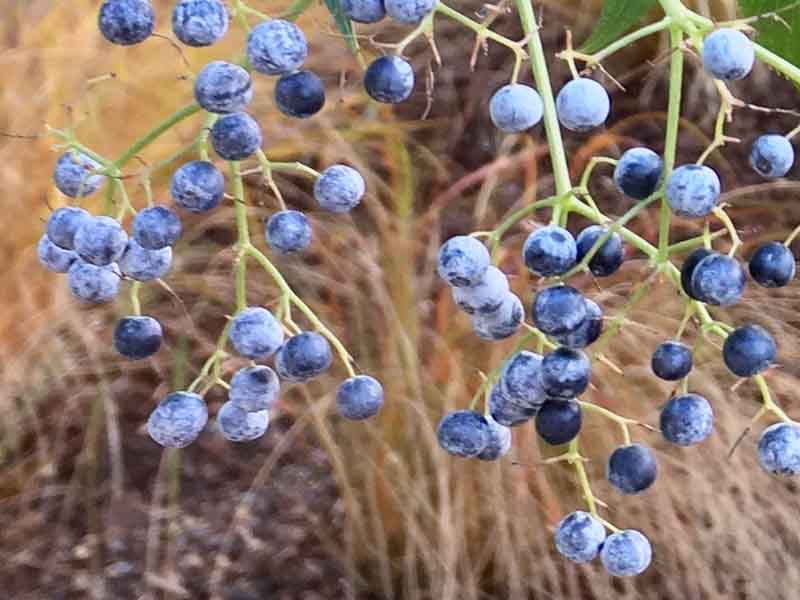
- Blue elderberry. Sambucus mexicana. Particular caution is required using elderberry. The leaves, bark, buds, and sometimes berries have caused poisonings. Species with red or white berries should be avoided.
Walnut family
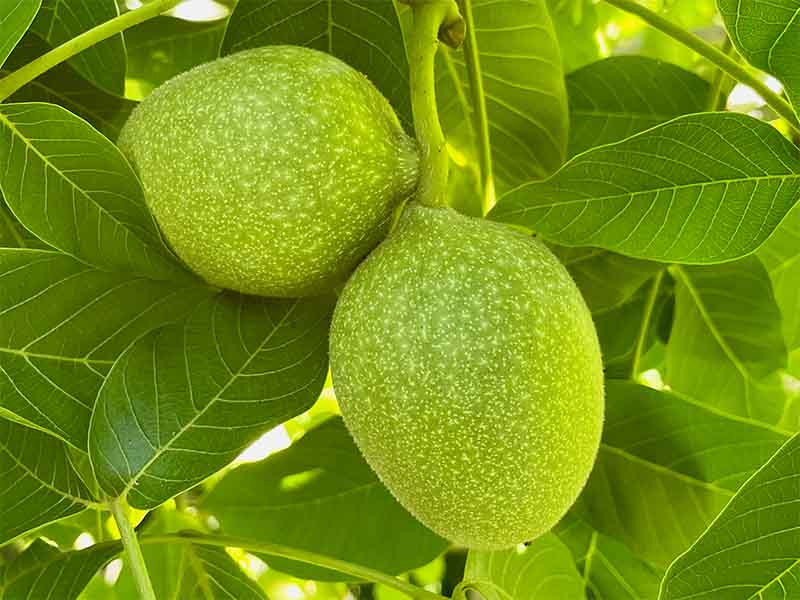
- Northern California black walnut. Juglans hindsii (syn. Juglans californica var. hindsii).
- Walnut. Juglans regia.
Bibliography
- Edible Fruits of Forest Trees. 1957. A 13.2:F 94/957 US Federal Documents.
- Food and Fruit-Bearing Forest Species / Forest Resources Development Branch, Forest Resources Division, Forestry Department. 1983–.
- Food Plants of the World: An Illustrated Guide / Ben-Erik van Wyk. 2005. QK98.5 .A1 V36 2005.
- The Oxford Book of Food Plants; illustrations by B. E. Nicholson, text by S. G. Harrison, G. B. Masefield [and] Michael Wallis. SB175 .V38 1969.


